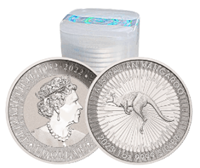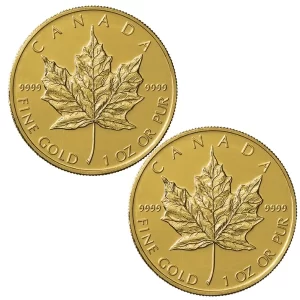Over the past 3 years, since immense currency printing rapidly devalued paper fiat currencies across the world, Central Bank Digital Currencies (CBDCs) have been getting far more mainstream attention. On one side of the coin you hear monetary officials speaking about how exciting this transition into a digital global currency will be, while on the other hand you have people warning about how disastrous it would be to centralize monetary power under one entity. If the world began to use a global monetary unit controlled by the International Monetary Fund (IMF), World Bank, Bank of International Settlements (BIS) or a combination of all three, we believe the latter is a far more accurate representation of what would occur. You are already seeing the downfall of paper currencies that are controlled by central entities (central banks) that can print these currencies at will. The end result is ALWAYS a devaluation of citizen savings and purchasing power that can never be recovered as fiat currencies are always being printed and never destroyed.
While the current system has shown massive weakness due to moving away from real value backing money (silver, gold and other commodities) – the fact that there are still many central banks around the world that can make their own rules, opens the door for new rules and regulations to be applied to their currency without asking for permission from above. If all these central banks had their power abolished and centralized under either the IMF, World Bank, BIS or all three as mentioned above, the head of these institutions would have full control over the purchasing power of every citizen of the world.
Admittedly, much of the above had been previously rooted in speculation as we tried to make sense of all the financial developments being announced across the world. However, late last week, the Digital Currency Monetary Authority (DCMA) in conjunction with the IMF announced a Universal Monetary Unit (UMU or Unicoin) that would be used as “a legal money commodity [that can] transact in any legal tender settlement currency, and functions like a CBDC to enforce banking regulations and to protect the financial integrity of the international banking system.” While at face value this does not seem like anything to worry about, when you track back and revisit our newsletters that warn about how a CBDC could be used, the line, “and functions like a CBDC to enforce banking regulations” becomes far scarier. When understanding that with digital currencies all purchases are tracked, carbon credits or a social credit system can be applied, negative interest rates on bank accounts can be used to spark spending and stifle saving, among other controls – it becomes clear why citizens are turning to silver and gold at a rapid pace to avoid having their wealth being put deeper under the thumb of another monetary authority.
With the above highlighted, it begs the question to be asked: Who is the Digital Currency Monetary Authority anyway?
All that we are told is that they are an organization consisting of “sovereign states, central banks, commercial and retail banks, and other financial institutions” – their website never mentions who exactly makes up these institutions or states adding to the scepticism as no one can be sure who is pushing this new Universal Monetary Unit. What is interesting, is that just 1-week ago on April 10th, the IMF released a CBDC handbook meant to assist central banks and governments in rolling out their own CBDCs, clearly signalling that this is the path forward.
Given that the United States historically has held most control when it comes to the IMF and their dealings with other struggling countries, it should come as no surprise that the United States government has been touting the potential benefits of a digital U.S. Dollar on the official White House website. Further to this, let’s not forget that the United States still has not raised their debt ceiling pushing the country closer and closer to default. Again, if this were to happen, the value of ALL U.S. dollars would be called into question and the system would see a dramatic shift in value back toward real money, silver and gold. What also should be noted again is that Janet Yellen of the United States Treasury stated that the Treasury has enough funds to pay the countries bills until June of 2023, which at that point they would be tapped out. In no way could it be a coincidence that the FedNow digital payments system coming out of the Federal Reserve is set to be activated one month later in July.
On the other side of the world, you are seeing a far different scenario play out, a scenario that is focused on real value and real assets when it comes to countries financial futures. It was previously reported that a mutual BRICS currency would be potentially backed by commodities such as silver, gold, rare earth metals, and/or oil reserves. A far cry from the IMF’s Universal Monetary Unit that is rumoured to be backed by a diverse equities portfolio, meaning stocks, bonds, and other securities. Assets that have been proven these past years to be anything but stable or the “safe-havens” they were advertised to be. So why would anyone want to use a currency backed by these assets? The answer: they wouldn’t. And when considering that BRICS has received applications from “over a dozen” countries all overflowing with commodities — it is becoming clear that illusionary wealth is moving west, while real wealth is moving east.
If all applications are accepted by the current BRICS nations, members would create a group of countries with a GDP 30% larger than that of the United States, they would represent over 50% of the global population, and would control 60% of all global gas reserves – this not even mentioning the fact these nations have been stockpiling precious metals at a unprecedented pace.
The choice is being presented to all citizens of every nation – either move in the direction of illusionary CBDC wealth OR move toward becoming your own bank with real wealth held in tangible commodities like silver, gold, and other precious metals. If you are someone looking to secure your wealth with real assets, check out a staple in the silver community, the 1oz Silver Kangaroo Coin out of the Perth Mint. As silver has recently shown once inflation became entrenched, as purchasing power is lost in the Canadian Dollar – it is absorbed into silver – protecting its’ holder.
 Hi,
Hi,























